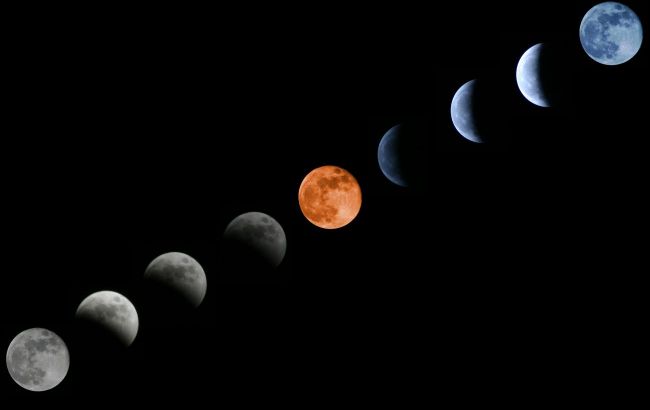Lunar and solar eclipses occur in pairs and with 2-week interval: Details
 Why solar and lunar eclipses often occur in pairs (photo: Getty Images)
Why solar and lunar eclipses often occur in pairs (photo: Getty Images)
Eclipses of the Sun and Moon always occur in pairs at intervals of about two weeks. This phenomenon arouses interest and questions: why is it so?
RBC-Ukraine, citing IFL Science, dwells on how scientists explain it.
Eclipses are unique astronomical events that occur when the Sun, Earth, and Moon align in space. Interestingly, eclipses usually occur in pairs: solar and lunar, with an interval of about two weeks.
Seasons of eclipses
The Earth revolves around the Sun, and the Moon revolves around the Earth. The Moon's orbit is inclined by about 5 degrees relative to the Earth's orbit. Because of this tilt, eclipses do not occur every month.
However, twice a year, there are periods when the Sun, Earth, and Moon are aligned in the same plane. These periods are called eclipse seasons and last about 34 days.
Why do eclipses come in pairs?
The alignment occurs only at certain times. The Moon crosses the plane of the Earth's orbit twice, and these are called nodes. When the nodes are near the full moon or new moon, there can be a lunar or solar eclipse.
However, the nodes do not remain stationary, otherwise, we would have eclipses every month or never. The nodes gradually rotate around the Earth, and they complete a full revolution in 6793 days, which is approximately 18.6 years. An eclipse can only occur when the Moon is in a node and the Sun is in the correct position.
The 14 days between the New Moon and the Full Moon are not enough for the node to shift sufficiently, which is why solar and lunar eclipses come in pairs.
Eclipses repeat on an 18-year cycle, which is observed by many cultures on Earth that have determined this cycle independently of each other. This cycle is called the Saros cycle.
Eclipse pairs
During the same eclipse season, a lunar eclipse can occur during a full moon, and a solar eclipse can occur during a new moon. Since there are approximately 14 days between a full and a new moon, eclipses occur in pairs with an interval of two weeks.
For example, in 2024, a partial lunar eclipse occurred on September 18, and an annular solar eclipse on October 2. And in 2025, a partial lunar eclipse occurred on March 14, and a solar eclipse was on March 29.
Another pair of eclipses awaits us in the fall: the lunar eclipse will be on September 7, and the solar eclipse will be on September 21.
In 2026, an annular solar eclipse will occur on February 17 and a total lunar eclipse on March 3, followed by a total solar eclipse on August 12 and a partial lunar eclipse on August 28.
Are there any exceptions?
Sometimes three eclipses can occur in one eclipse season: two solar and one lunar, or vice versa. This happens when the first eclipse occurs at the beginning of the season, the second in the middle, and the third at the end. However, such cases are rare.
Solar eclipse on March 29
In some countries, the Sun was completely obscured, and in some, partially. The best view of the eclipse was in North Africa, Spain, and western Europe.

